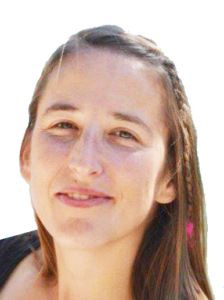Opinion
Green Spotlight: 2021, light therapy
Sibylle de Valence
This article is more than 4 years old.

Altogether now: “The sun will come out tomorrow!” (photo: Pixabay)
Five: that was the number of hours of sun that Denmark experienced over the first 20 days of December. An average of 5.3 minutes of sunshine per day!
But even if we had 100 hours, it wouldn’t be enough, according to Professor Susanne Gjedsted Bügel at the University of Copenhagen, as the sunlight comes in at such a very low angle that it would not be enough to fulfil our vitamin D needs.
So if you’re feeling sad and depressed, don’t resort to anxiolytics and instead invest in a light therapy lamp.
Photosynthesis in play
It’s not dissimilar to the 20,000 LED lights providing mountains of salad with energy and warmth in a 7,000 sqm warehouse located in an industrial area on the outskirts of Copenhagen, where photosynthesis is always in play.
The largest indoor vertical farm in Europe was inaugurated in Denmark on December 7. Some 15 harvests per year are expected to produce nearly a thousand tonnes of salads and aromatic herbs grown above ground and intended for restaurants and caterers, as well as supermarkets.
Grown in a constant 20-degree temperature, the stacks of veg are 14 levels high. Automated robots circulate between the shelves transporting the seeds and contributing to the space-age atmosphere in this unusual hyper-clean and windowless farm, where there’s not one trace of soil or daylight.
Keeping a lid on loss
Energy consumption will account for 30 percent of the total production cost, and yet Anders Riemann, the man behind the startup Nordic Harvest in partnership with the Taiwanese company YesHealth Group, describes the urban farm as an ‘ecological model’.
The food is grown close to the end-consumers, so there are no food losses or CO2 emissions during transportation. Nothing is lost, everything is recycled: water, nutrients and fertilisers. And no pesticides are used.
And, of course, the green energy is 100 percent derived from renewable sources – the wind turbines Denmark has so many of. “Here the demand [of wind power] is not meeting the supply, therefore it is a perfect match,” notes Riemann.
Tasteful future?
The Danish Farmers’ Union contends that 95 percent of the Danish population is ready to change their consumption behaviour in order to protect the environment. But at the same time, another study insists that the Danes are still driven by price.
It is yet to be seen in a few months if the price makes the difference. And if the economics follow, and the taste too. Because according to Riemann, here lies the future of agriculture in an over-populated world more prone to extreme weather.
Word of the year
In the meantime, the Danes have chosen their word of the infamous year 2020: ‘Samfundssind’.
Originating in 1936, it breaks down into ‘samfund’ (society) and ‘sind’ (mind), and it was used shortly afterwards by the then prime minister when he appealed for solidarity at the start of World War II.
It was apt therefore that one of his successors, Mette Frederiksen, used it on March 11 when she announced the lockdown. “We have to stand together by keeping our distance. We need community spirit (…) Samfundssind,” she said, calling for a collective responsibility combined with a sense of community.
And it’s proven to be a new standard for our society – a new form of patriotism that has created a buzz on social media and in our everyday lives. It celebrates the heroism of small daily acts of kindness and mutual support.
That’s enough to be hopeful for 2021 and the new world to come!

About
Sibylle de Valence
Sibylle is a French journalist, columnist and author who writes for a variety of French, English and Italian language-publications, specialising on the green transition. Having lived and worked in San Francisco, Milan, Berlin, Rome, Calgary and Paris, she speaks five languages. Follow her on Instagram at sibdevalence










































